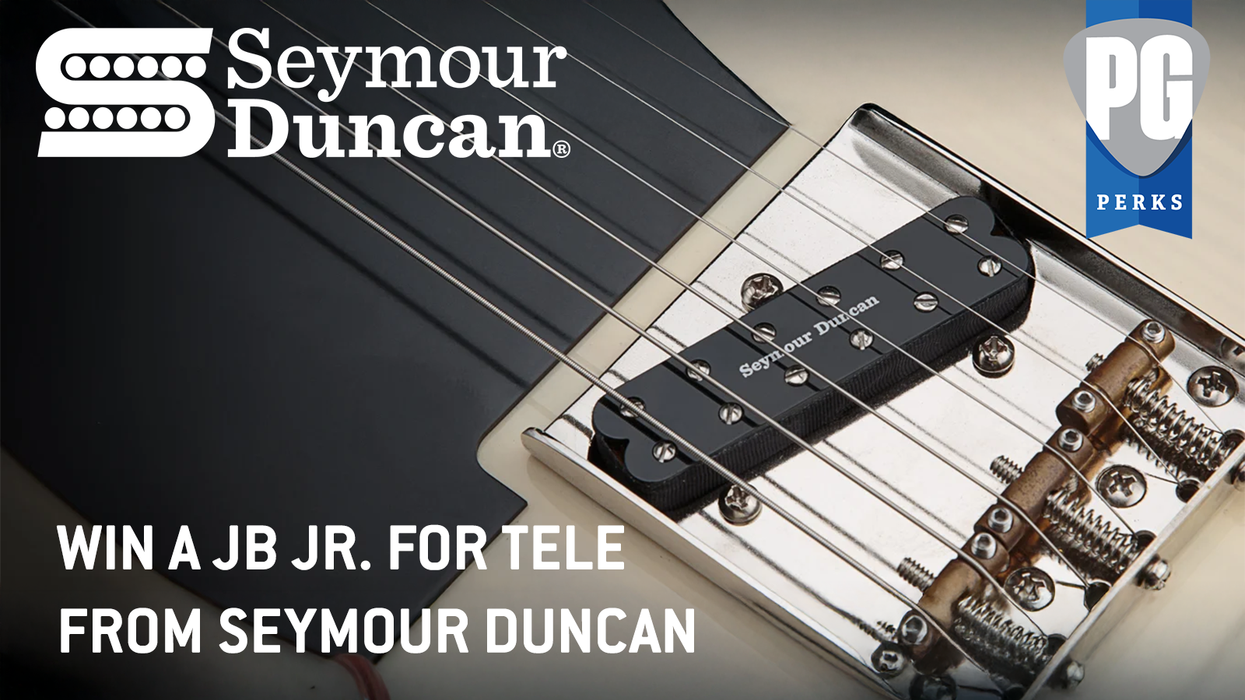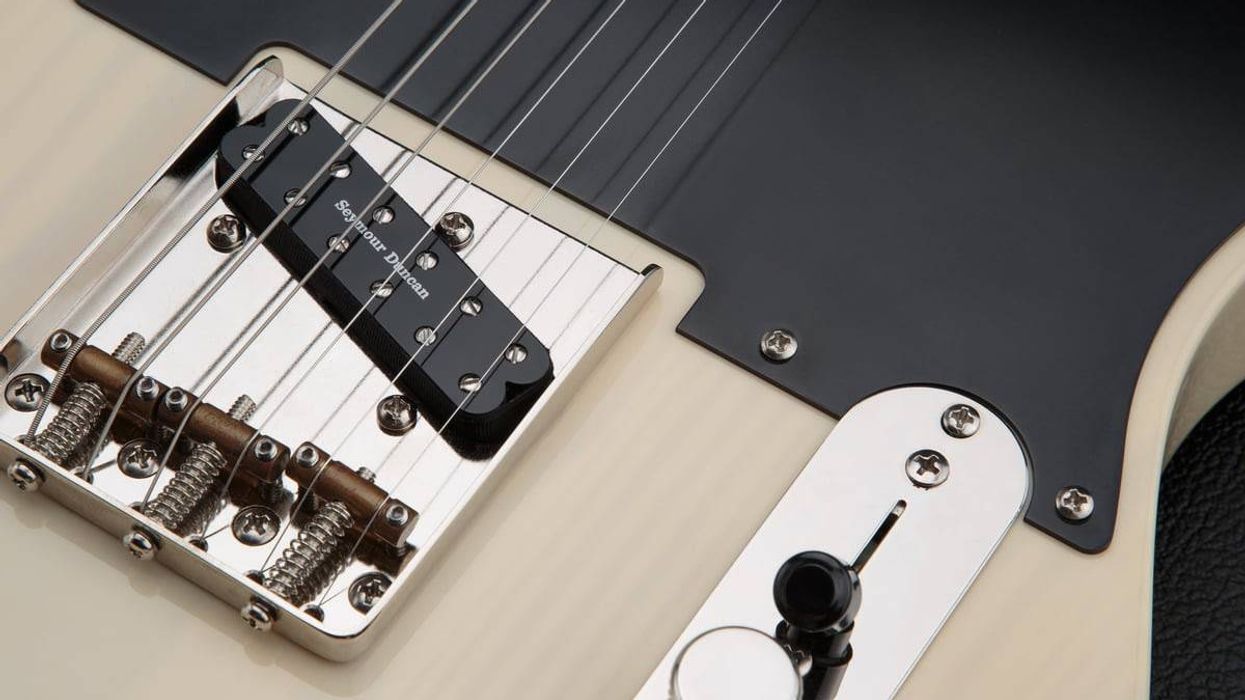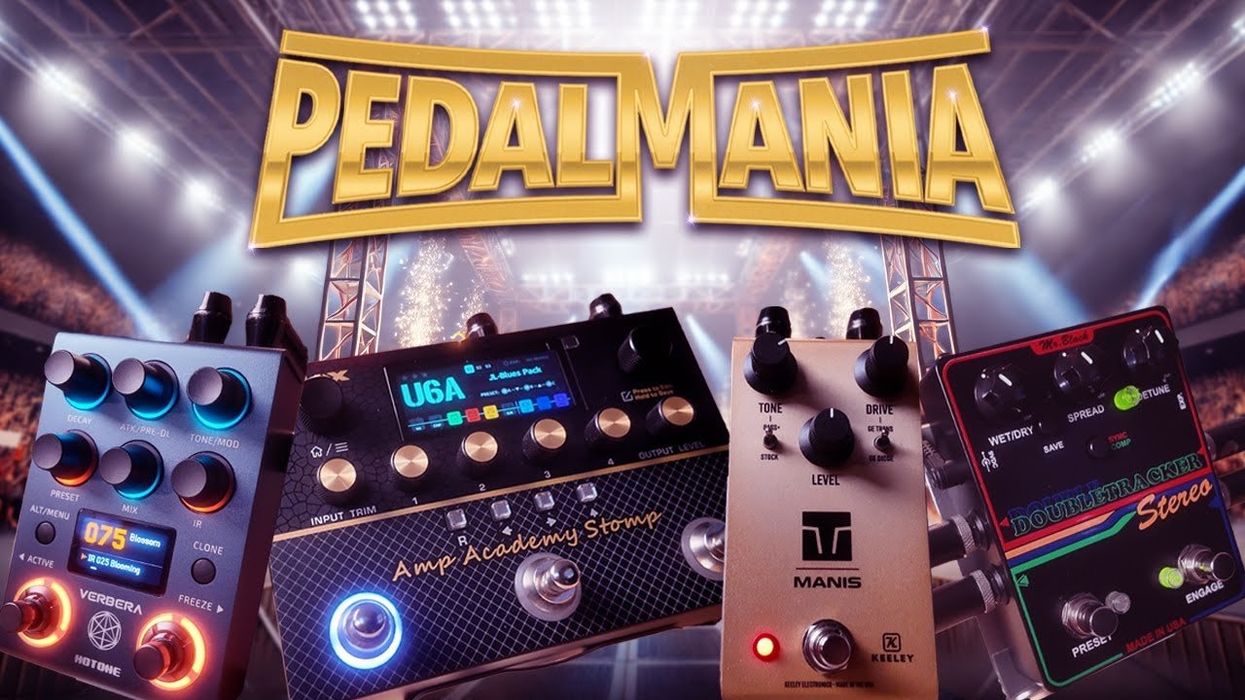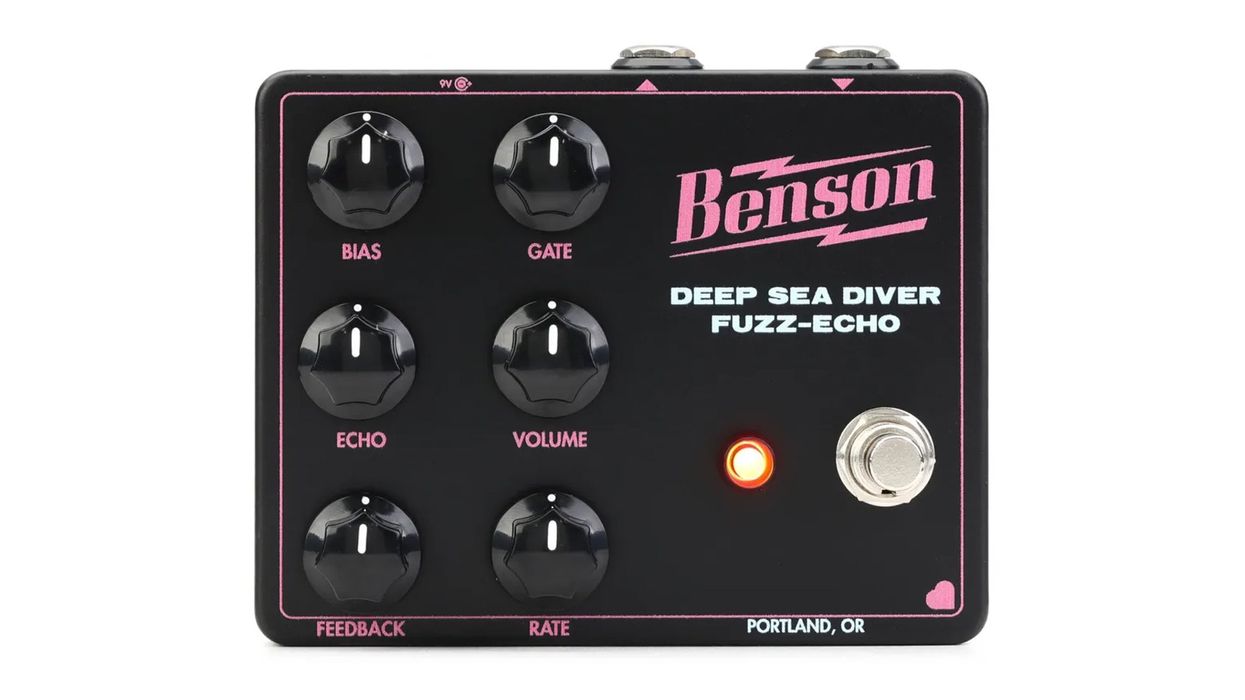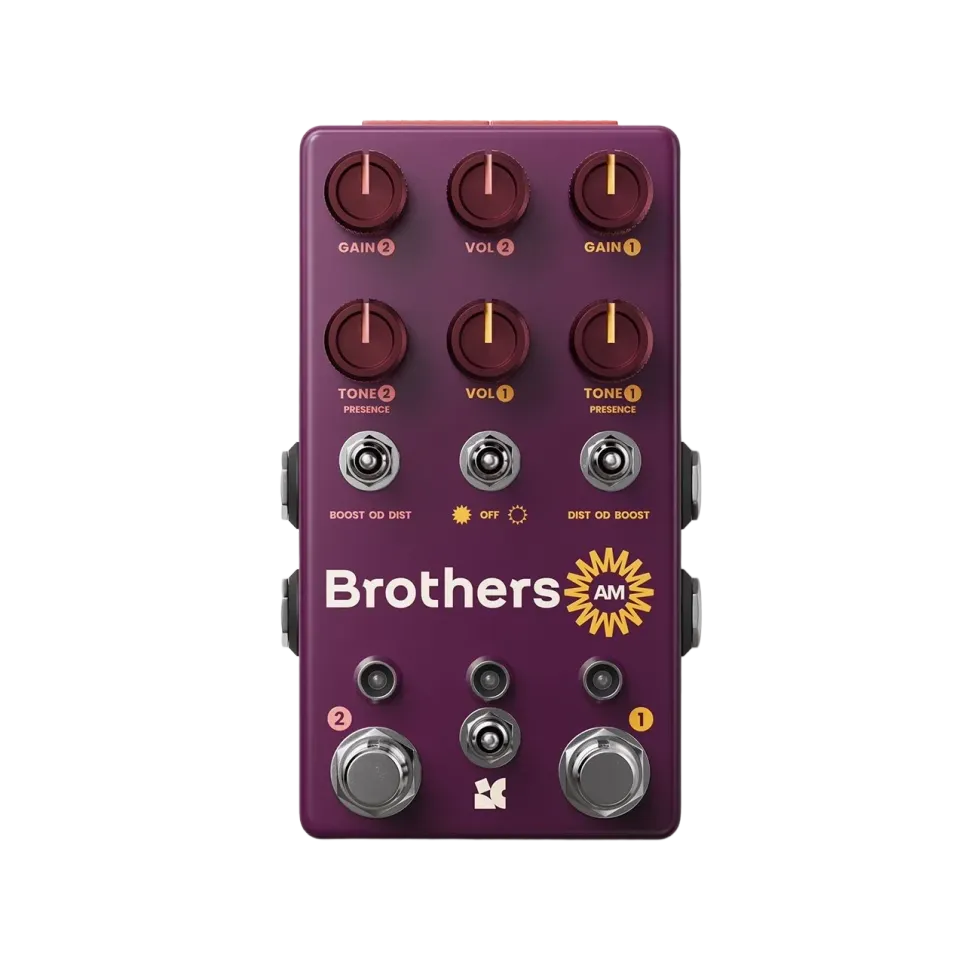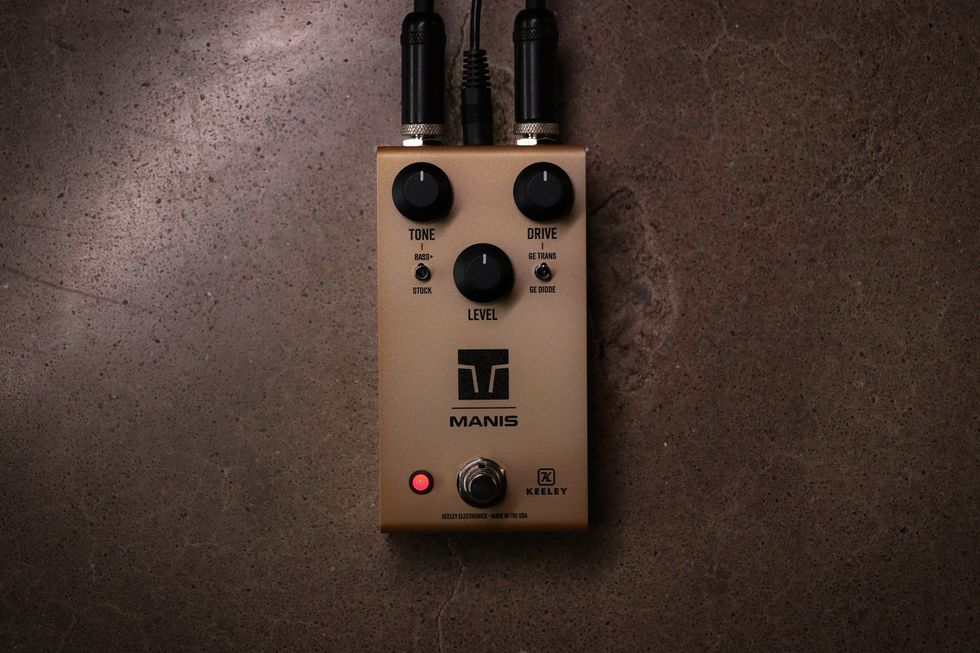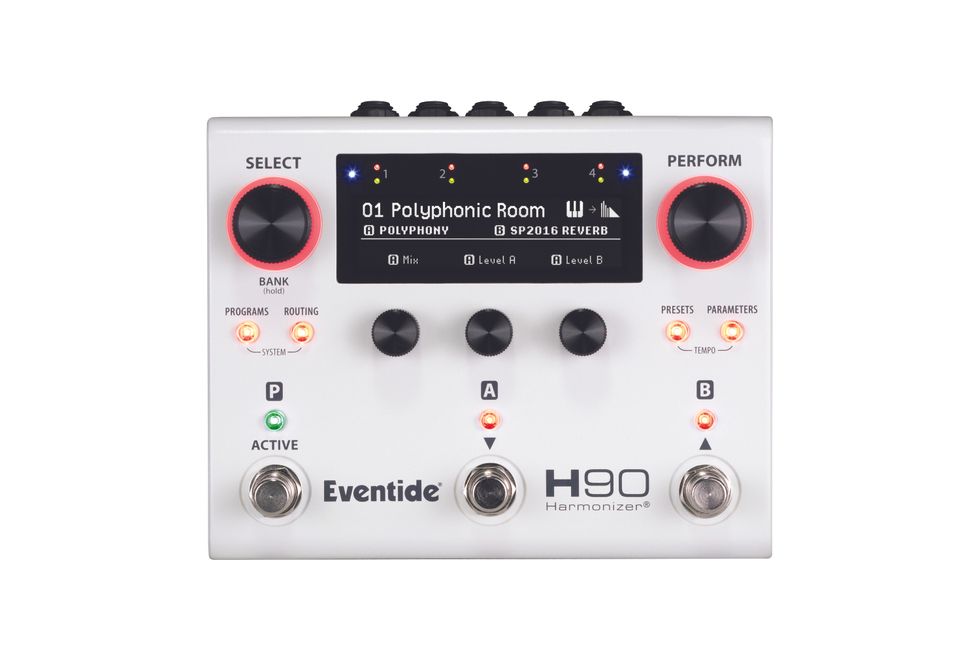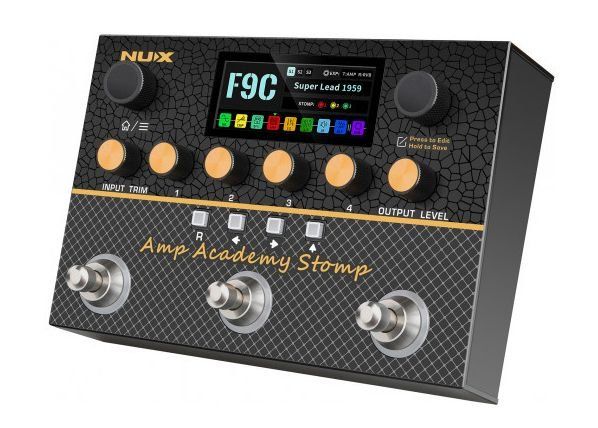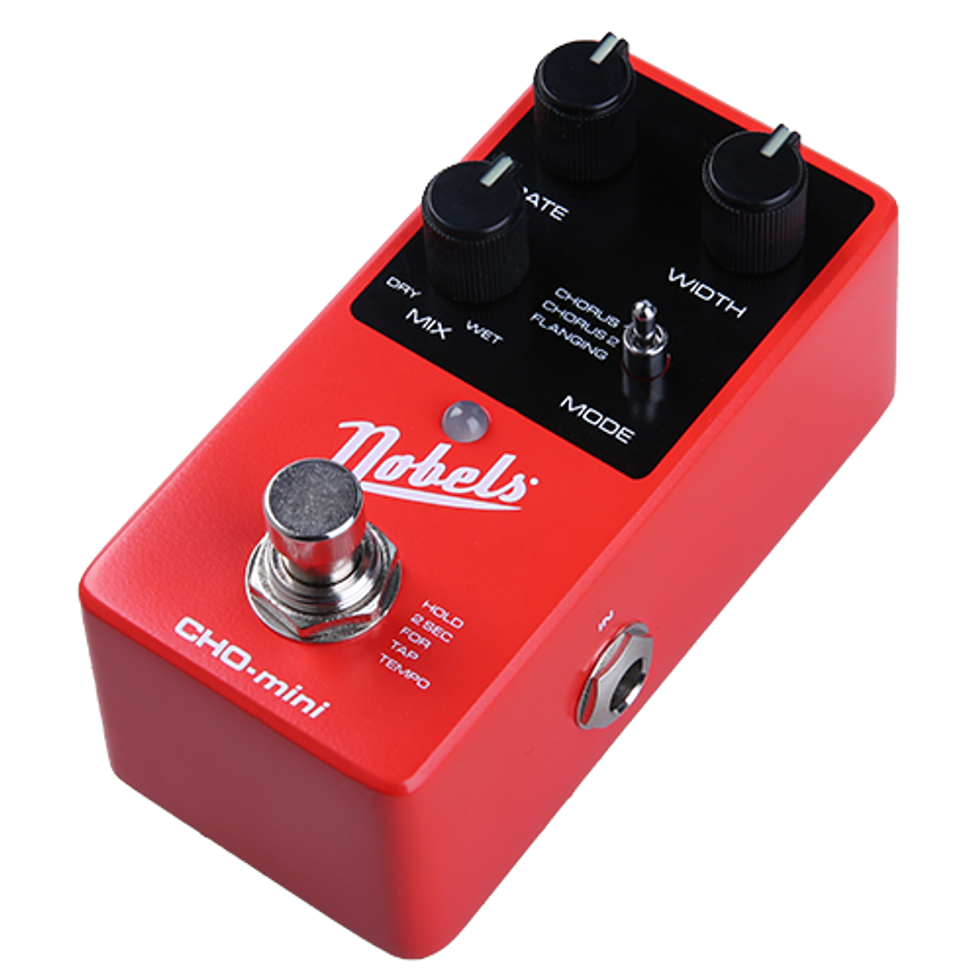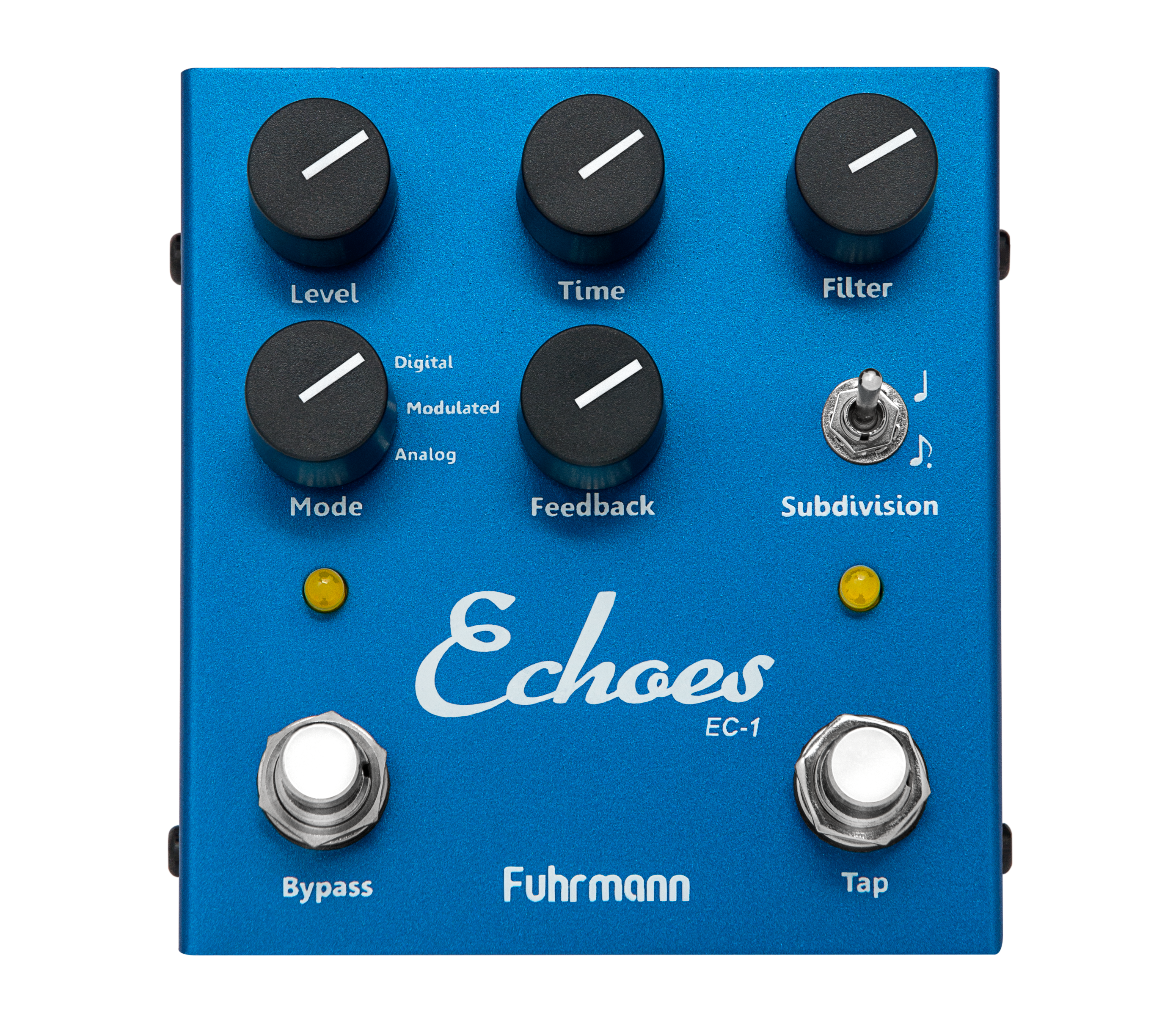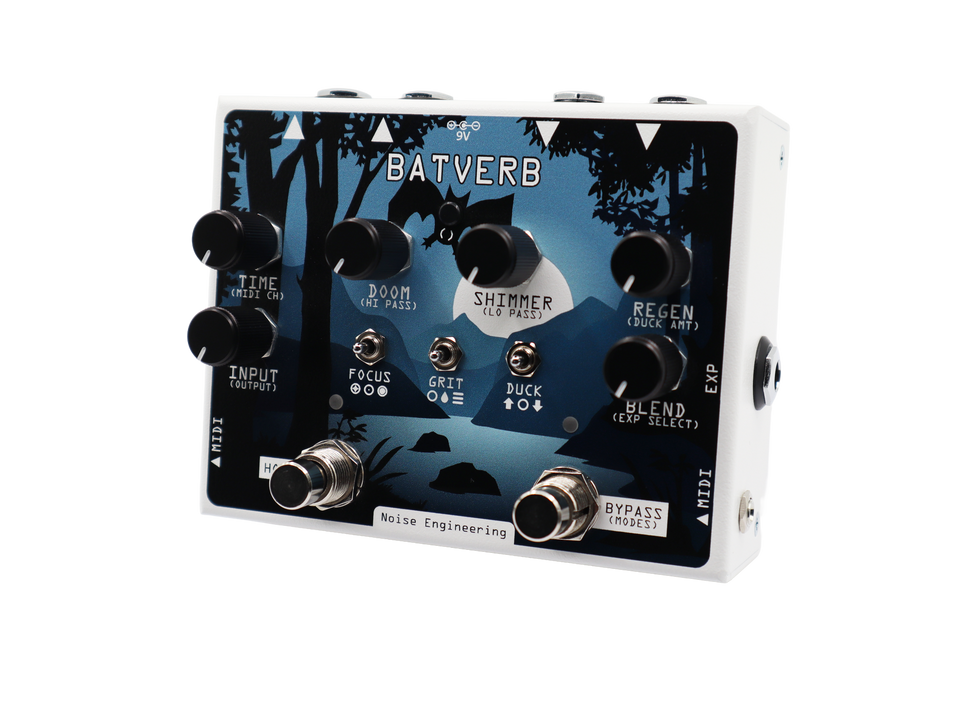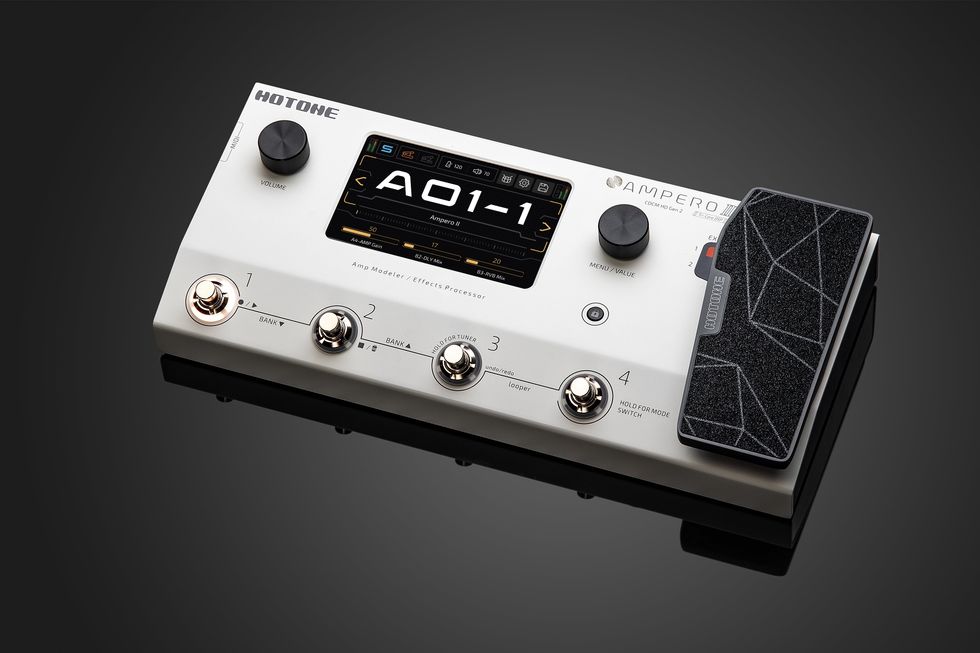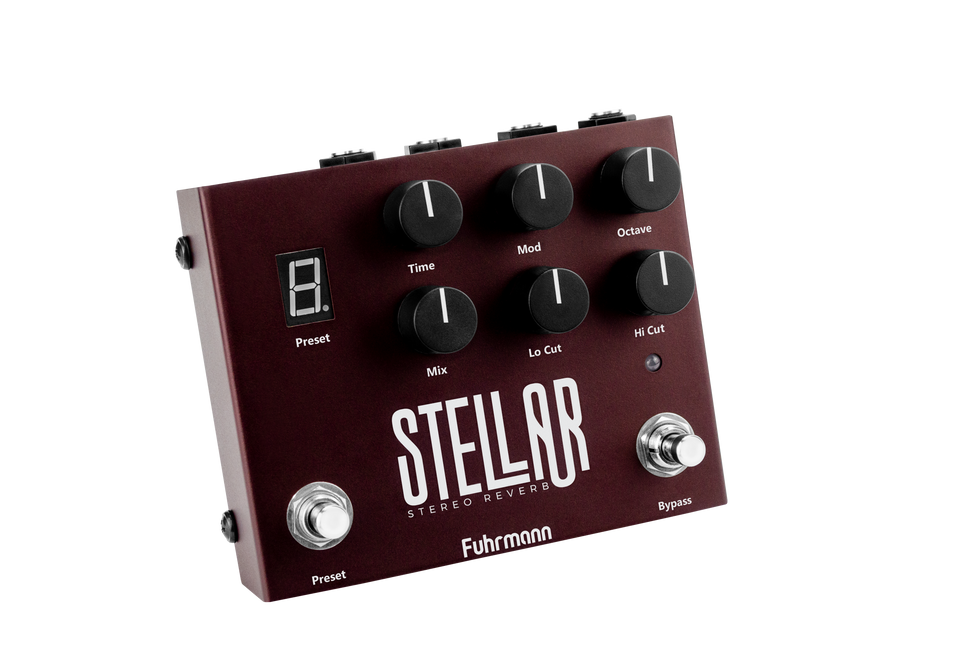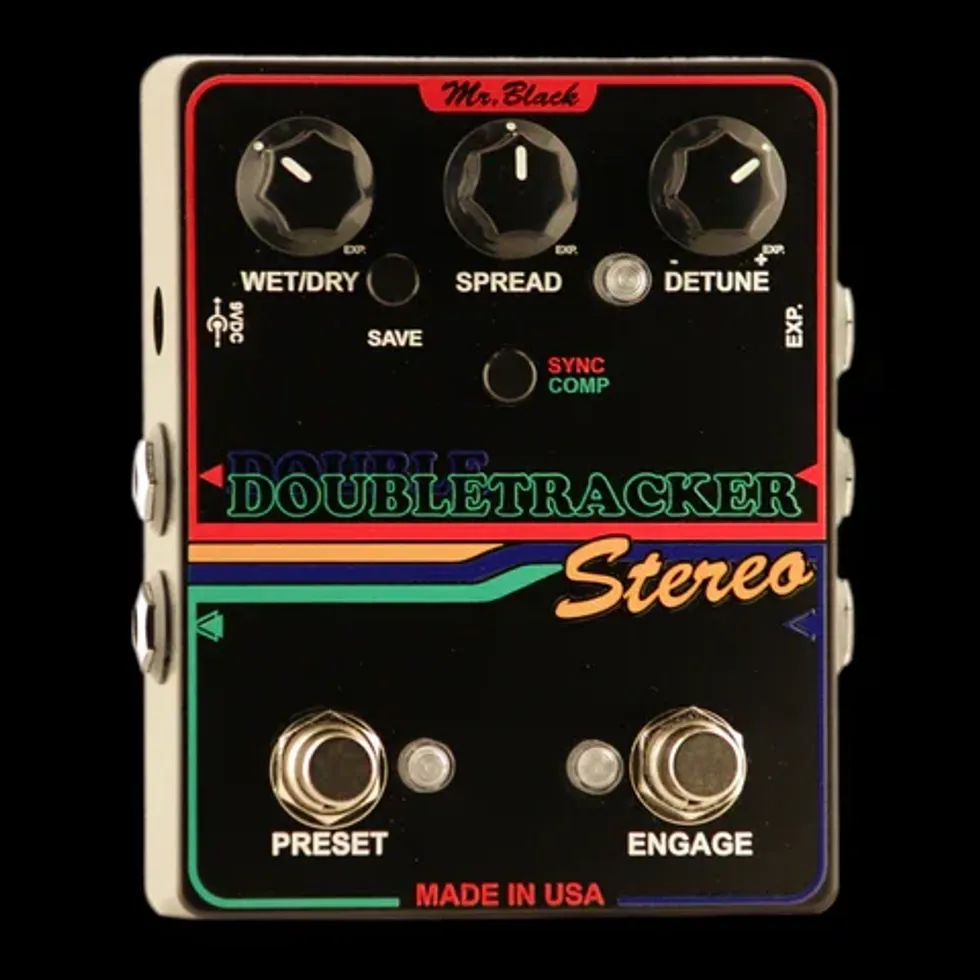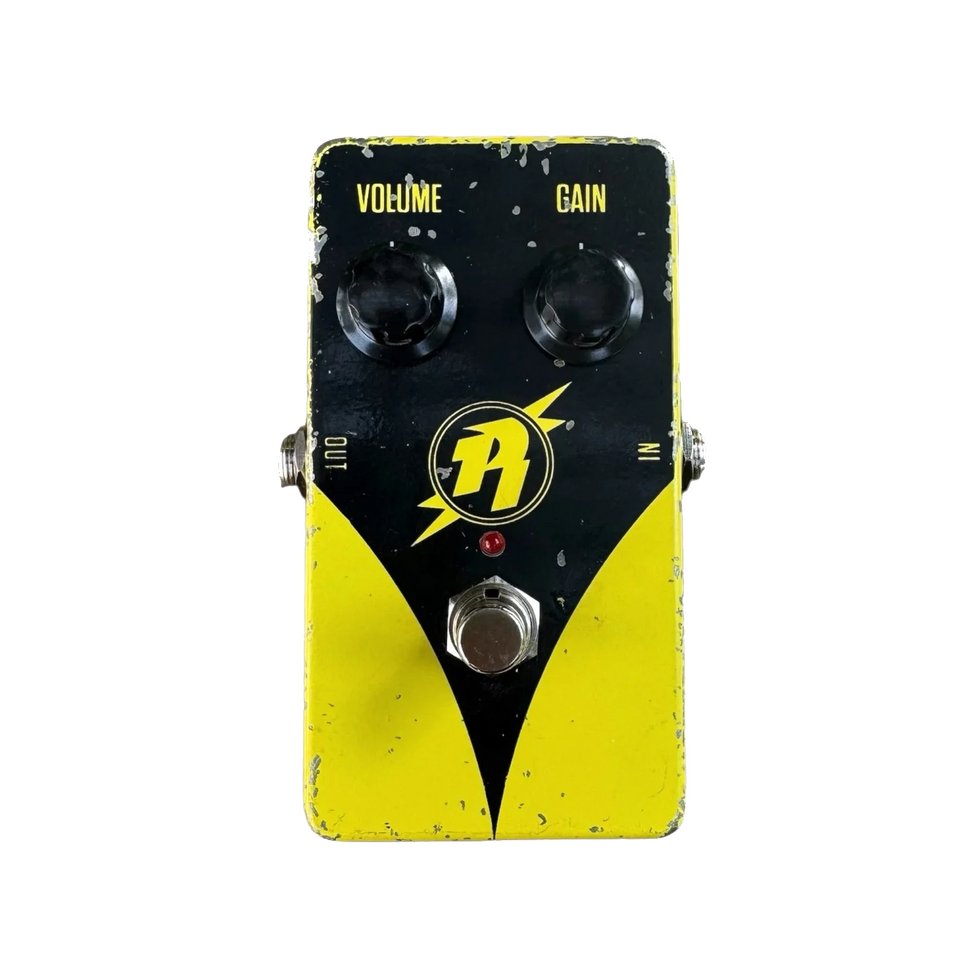On the heels of its full-sized Skysurfer reverb pedal, TC Electronic has introduced the smaller and even more affordable Skysurfer Mini. TC, of course has a well-established and solid foundation in studio reverbs as well as a proven ability to miniaturize effects. And this tiny 3.9" x 2.2" x 2.2" metal box might just pack the most reverb value per-square-inch of any pedal out there.
The Little One
Though it's small, the Skysurfer Mini's control set matches that of its bigger sibling. That means knobs for reverb, mix, and tone (the latter of which alters the EQ profile of the reverb's decay, but not the dry signal). Just as on the bigger Skysurfer, there's a mini-toggle switch to select spring, plate, or hall reverb.
Recorded with a K-Line Springfield with Strat-style single-coil pickups using the neck pickup, into an AC15-style 1x12 combo set for clean.
Clip 1: Hall – Pedal briefly off, then on. Tone noon, Reverb 11 o'clock, Mix 11 o'clock.
Clip 2: Plate – Pedal briefly off, then on. Tone noon, Reverb 11 o'clock, Mix 11 o'clock.
Clip 3: Spring – Pedal briefly off, then on. Tone noon, Reverb 11 o'clock, Mix 11 o'clock. Near the end, Reverb and Mix turned up to 3 o'clock, guitar switched to bridge pickup.
The footswitch is non-latching, there are mono input and output jacks, power comes from a 9V center-negative jack on the crown, and the pedal draws 100 mA. The enclosure itself feels impressively rugged. And perhaps my only hesitation with embracing such a conveniently small pedal is that my ham-footed size 11s might be just as likely to stomp the knobs as the switch on a dark stage. Such are the risks with most mini-pedals, but your level of care—or klutziness—may make such complications less of a factor.
Surf’s Up
I situated the Skysurfer Mini in front of a tweed Deluxe-style 1x12 combo and in the loop of a Friedman Mini Dirty Shirley 1x10 combo, using a Les Paul and a K-Line Springfield S-style. It didn't take me long to find several favorite settings.
Each reverb mode, including the spring, has personality and can be extremely effective and offer cool creative options when used right.
The unit's overall tonality is bright and lively, which lends the feel of hard-surface reflections to most settings, rather than the soft, hazy edges you hear in some room or well-aged plate or spring reverbs. But you can easily dial in warmer reverb tones with careful use of the tone knob. Reverb snobs may quibble with the reality of some vintage-style settings. The spring setting, for example, probably won't fool old pros into thinking they're running through a '63 Fender Reverb. Yet each reverb mode, including the spring, has ample personality and can offer cool creative options when used right. For atmospheric reverbs, I found the hall with reverb and mix around 11 o'clock spacious, lush, and appealingly dimensional. When it came to the spring mode, however, I liked more aggressive settings with everything set around 1 o'clock, which is a blast for surf-punk riff mongering.
While the perception of depth and delay varies in the spring, plate, and hall modes, the taper in each control seems to favor wet settings rather than a range of subtle wet/dry blends. Given that deeper settings audibly dull the impact of the dry signal, it's often wise to start from modest reverb settings and ease into deeper territory, where the fun is. That said, some of the bias toward wet signals is made possible by the flexible tone control, which can lend clarity to transients and enables exploration of much more deep and drenched reverb settings without creating a wash of harsh overtones in the reflections.
The Verdict
The Skysurfer Mini may not always deliver the same lushness or depth you get from complex and expensive digital reverbs, but it's ideal for compact grab 'n' go rigs. At $45, this relatively versatile digital reverb is a fantastic bargain. It sounds reasonably realistic to expansive in all modes, and while more traditional players might want to rein in the depth in most instances, more experimental players can take the Skysurfer Mini to very lush and huge-sounding spaces. If you're on a strict budget, the Skysurfer Mini Reverb is very hard to beat.









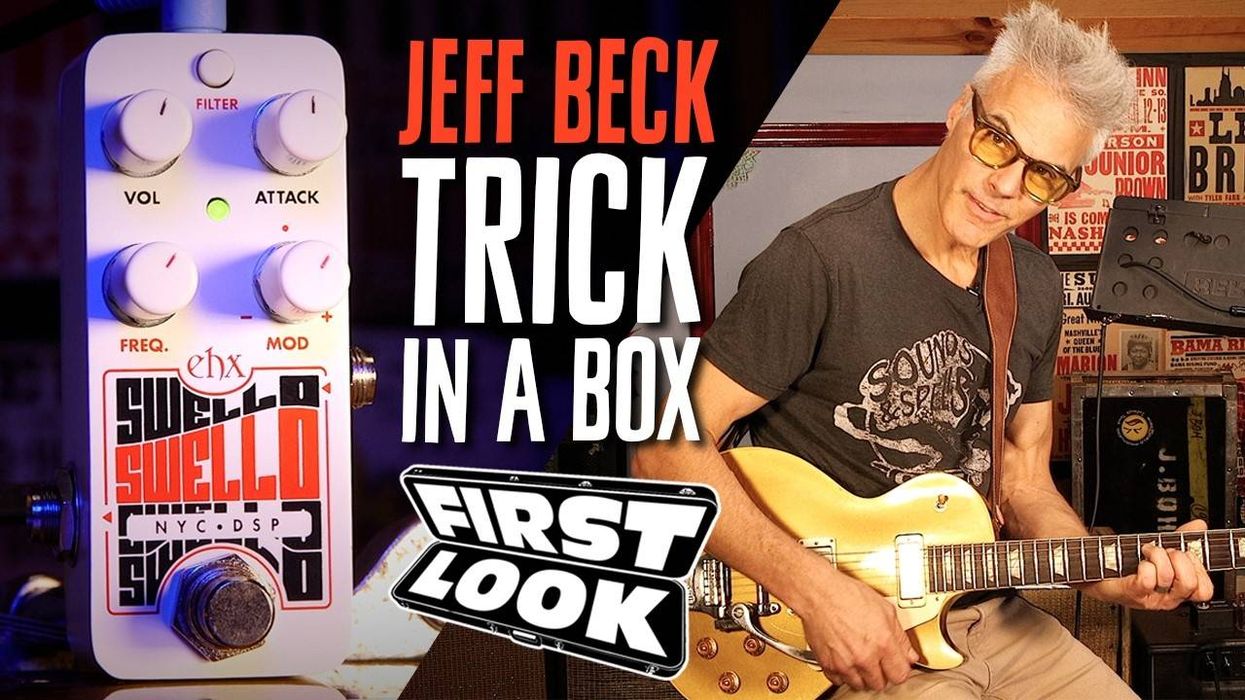
![Devon Eisenbarger [Katy Perry] Rig Rundown](https://www.premierguitar.com/media-library/youtube.jpg?id=61774583&width=1245&height=700&quality=70&coordinates=0%2C0%2C0%2C0)
